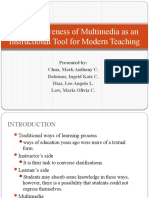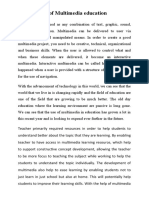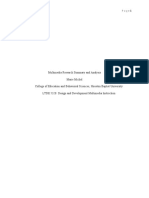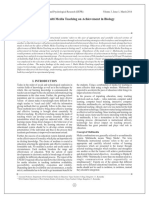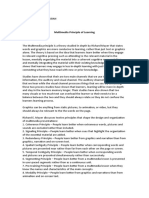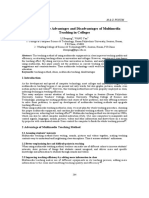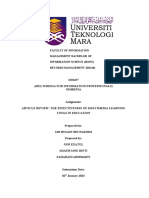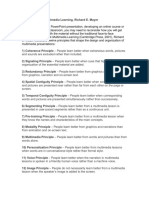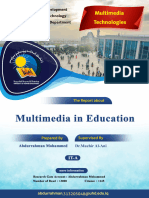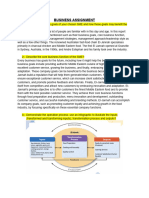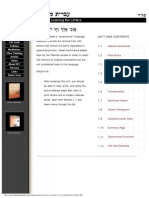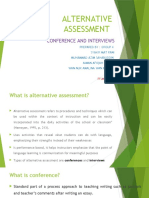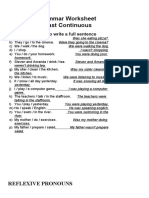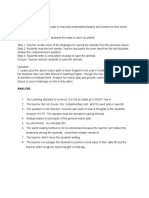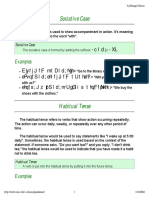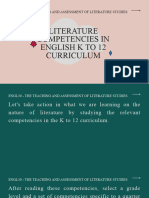0% found this document useful (0 votes)
17 views4 pagesArticle
This paper examines the effectiveness of multimedia in education, demonstrating that tools like audio, video, and animations enhance student engagement and learning outcomes. Research indicates that multimedia significantly improves motivation, understanding, and retention, while also catering to diverse learning styles. However, successful implementation requires strategic planning, teacher training, and access to technology.
Uploaded by
meerabb1000Copyright
© © All Rights Reserved
We take content rights seriously. If you suspect this is your content, claim it here.
Available Formats
Download as DOCX, PDF, TXT or read online on Scribd
0% found this document useful (0 votes)
17 views4 pagesArticle
This paper examines the effectiveness of multimedia in education, demonstrating that tools like audio, video, and animations enhance student engagement and learning outcomes. Research indicates that multimedia significantly improves motivation, understanding, and retention, while also catering to diverse learning styles. However, successful implementation requires strategic planning, teacher training, and access to technology.
Uploaded by
meerabb1000Copyright
© © All Rights Reserved
We take content rights seriously. If you suspect this is your content, claim it here.
Available Formats
Download as DOCX, PDF, TXT or read online on Scribd
/ 4








